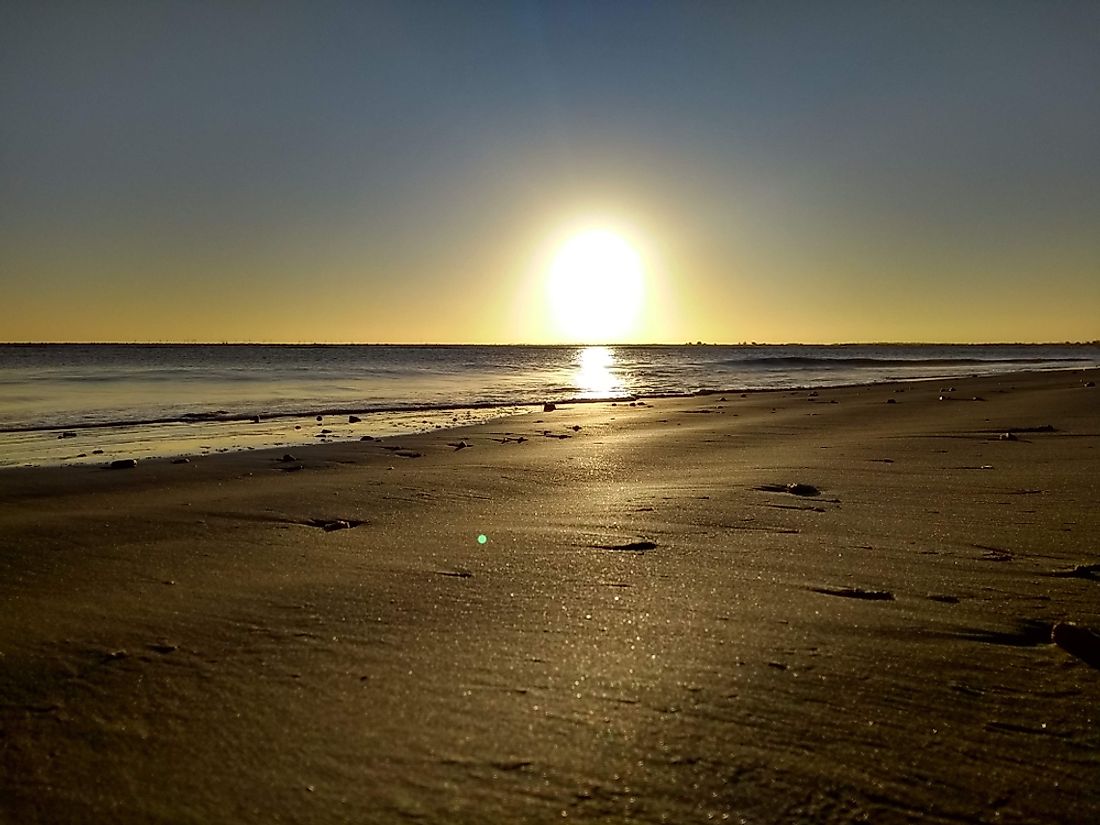Lagoa dos Patos: The Largest Lagoon In South America

A lagoon is a shallow body of water separated from a nearby larger body of water by reefs, barrier islands, or shoals. Additionally, although sometimes considered equivalent to estuaries, some definitions of a lagoon specify that the body of water must have some degree of salinity, while estuaries contain fresh water. There are two main types of lagoons: coastal lagoons and atoll lagoons. As the name suggests, coastal lagoons form along gentle sloping coasts due to the development of barrier islands and sandbars. Atoll lagoons resemble coastal lagoons, but are formed due to the growth of coral reefs. Atoll lagoons are common in the tropical waters of the Indian Ocean and South Pacific Ocean.
Largest Lagoon in South America: Lagoa dos Patos
Located in the Brazilian state of Rio Grande do Sul, Lagoa dos Patos is the largest lagoon in South America. The lagoon is 174 miles long, 44 miles wide, and has an area of approximately 3,900 sq mi. It is separated from the Atlantic Ocean by a five-mile wide sandbar, and is fed by the Camaquã and Jacuí-Guaíba rivers, while the Rio Grande empties the lagoon into the Atlantic. Lagoa dos Patos was formed by an ancient depression in the coastline of the Atlantic Ocean that became closed off over time by the accumulation of sand from wind and ocean currents. The lagoon is shallow and prone to tides and brackish water from the Rio Grande. The common bottlenose dolphin and other ocean predators are occasionally seen hunting in the lagoon. The drainage basin of Lagoa dos Patos stretches across southern Brazil and eastern Uruguay, and is also connected to Lagoa Mirim lagoon and other coastal lagoons.
Habitat
The ecoregion surrounding Lagoa dos Patos consists of freshwater coastal lagoons, brackish-saline coastal lagoons, swamps, ponds, and rivers. During high tide, water from the Atlantic Ocean flows back into the lagoon through the Rio Grande, making the water at its outlet brackish. Salt marshes near the lagoon provide nutrients to the ecosystem, and the smaller Lagoa Mirim is connected to Lagoa dos Patos by the São Gonçalo Canal. The vast habitat of Lagoa dos Patos contains four ecoregions: Alto Paraná Atlantic forests; Uruguayan savanna; Atlantic Coast restingas; and Araucaria moist forests. Lagoa dos Patos is inhabited by approximately 163 species, some of which are endemic.
Climate
Lagoa dos Patos experiences a humid subtropical climate characterized by warm summers and rainfall throughout the year. The mean annual temperature is between 14 °C and 20 °C, while the annual precipitation is between 1,000 and 2,100 mm.











